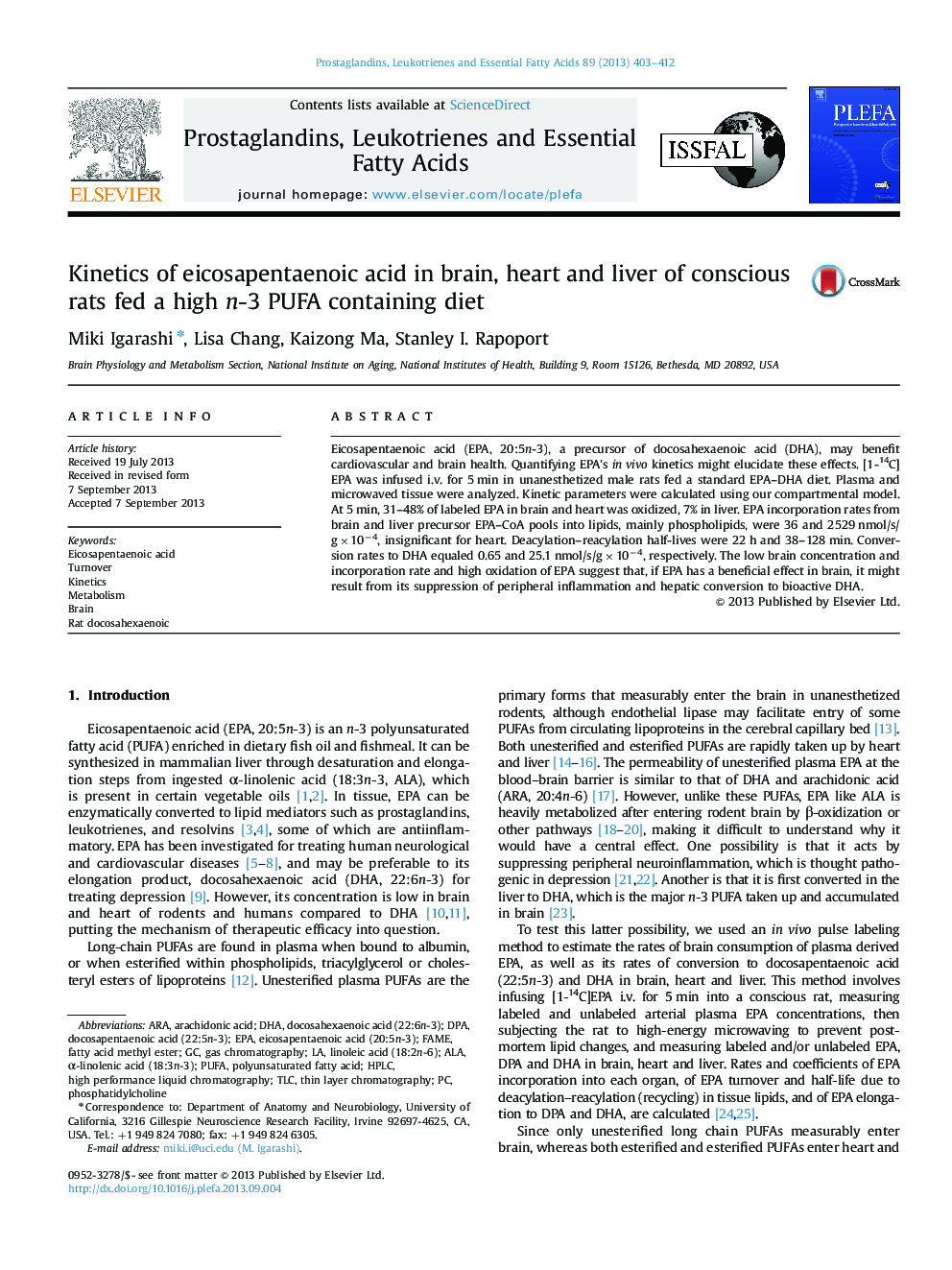| Article ID | Journal | Published Year | Pages | File Type |
|---|---|---|---|---|
| 2777638 | Prostaglandins, Leukotrienes and Essential Fatty Acids (PLEFA) | 2013 | 10 Pages |
Eicosapentaenoic acid (EPA, 20:5n-3), a precursor of docosahexaenoic acid (DHA), may benefit cardiovascular and brain health. Quantifying EPA's in vivo kinetics might elucidate these effects. [1-14C]EPA was infused i.v. for 5 min in unanesthetized male rats fed a standard EPA–DHA diet. Plasma and microwaved tissue were analyzed. Kinetic parameters were calculated using our compartmental model. At 5 min, 31–48% of labeled EPA in brain and heart was oxidized, 7% in liver. EPA incorporation rates from brain and liver precursor EPA–CoA pools into lipids, mainly phospholipids, were 36 and 2529 nmol/s/g×10−4, insignificant for heart. Deacylation–reacylation half-lives were 22 h and 38–128 min. Conversion rates to DHA equaled 0.65 and 25.1 nmol/s/g×10−4, respectively. The low brain concentration and incorporation rate and high oxidation of EPA suggest that, if EPA has a beneficial effect in brain, it might result from its suppression of peripheral inflammation and hepatic conversion to bioactive DHA.
